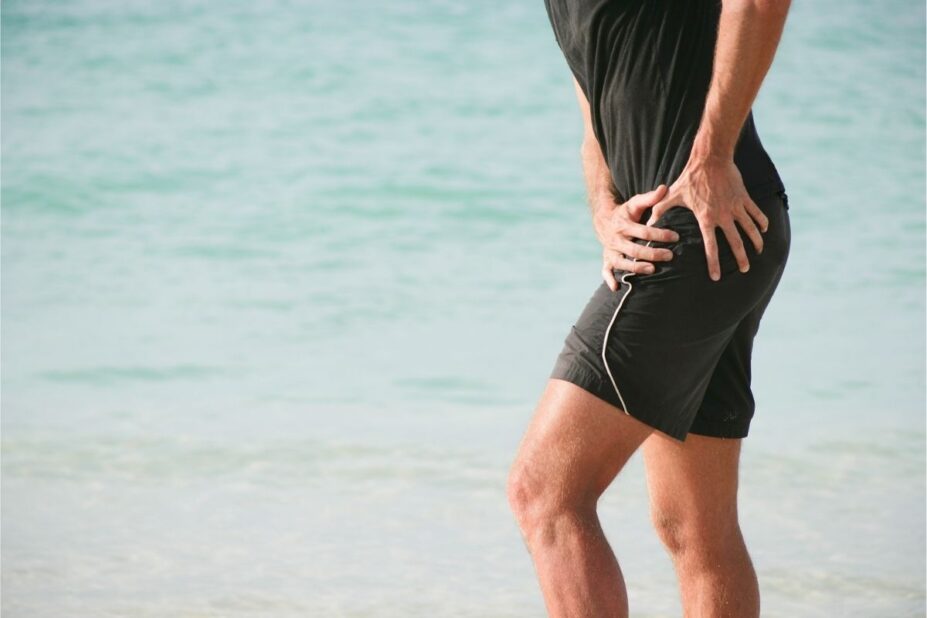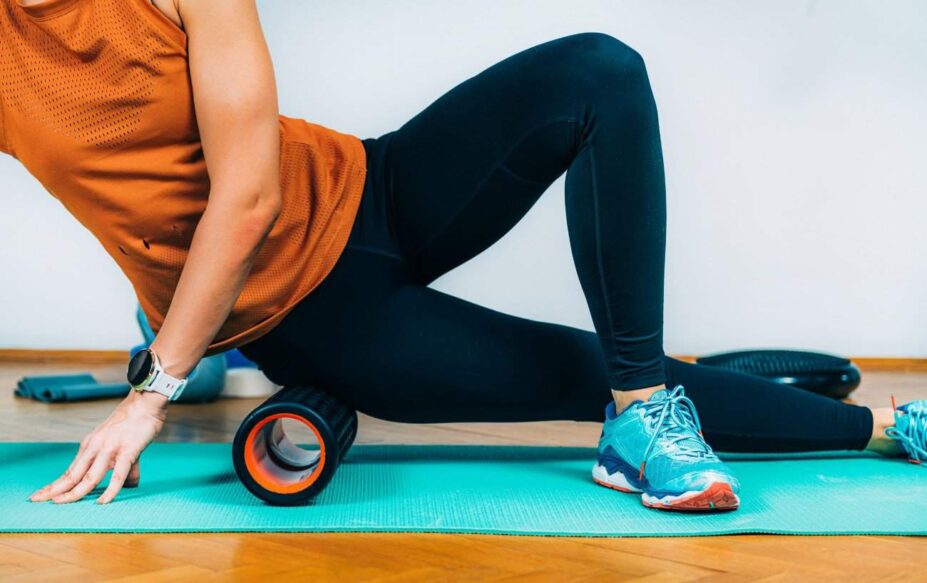From casual joggers to ultra marathoners, most runners have experienced some degree of hip discomfort stemming from overuse issues. Studies estimate as many as 70% of recreational runners report chronic hip pain from common culprits like IT band syndrome, trochanteric bursitis, labral tears, and osteoarthritis.
For an anatomical area subject to high repetitive impact during training, it remains surprisingly vulnerable without diligent prevention.
This manifests in localized pain at the sides, front or deep in the hip joint – often radiating laterally or down the legs. While reasonably rare as an acute injury, the insidious onset of chronic hip injuries can grind progress to a halt. The achy stiffness and soreness steadily increase run after run until suddenly a routine 5 miler feels like 50.
Yet with some education on proper strengthening, flexibility, and mechanics, runners can certainly bolster resiliency in those all-important hip joints. In this guide, we’ll overview the fundamentals of common runners’ hip injuries – symptoms, root causes, and treatments. But more vitally, discover proven methods for preventing future flair-ups as you continue to rack up the miles out on the roads and trails.
Getting To Know Your Hips

The hip joint forms that essential connection between the torso and lower body. Structurally, the ball-and-socket design offers incredible mobility through a wide range of motion. The rounded femoral head atop the femur bone rotates and pivots within the cup-like acetabulum of the pelvis. An assortment of slick cartilage, supportive ligaments, and surrounding muscles stabilize the hips during movement.
While designed for versatility, the hip anatomy is subject to tremendous loads during running. On each stride landing, the hip absorbs 2-3 times body weight before propelling into the next cycle. Rigorous training only compounds issues over weeks and months for runners.
Various factors impair the hips’ stability over this constant pounding. Muscle inhibition from excessive sitting manifests into weakness and imbalance around the hips. Tightness through the outer glutes, IT band, and quads also tug the femoral head out of alignment. Poor movement patterns emerge as compensation, creating eventual breakdown. However, by targeting these correctible risk factors, runners can rewrite their hip health story.
The Hit List: Most Common Culprits
With the hips serving as the essential shock absorber for running’s repetitive impact, several distinct overuse injuries emerge amongst runners:
- IT Band Syndrome – This common running injury stems from inflammation of the iliotibial band, caused by excessive friction against the femur bone. Pain manifests on the outer hip and can also radiate down to the knees.
- Trochanteric Bursitis – The bursa sac cushioning the upper femur bone becomes irritated. Hip pain presents on the outer point of the hips even at rest.
- Labral Tears – The fibrocartilage ring sealing the hip socket tears from the rotational force. Catching, stiffness, and loss of range manifest alongside dull interior hip aches.
- Osteoarthritis – Gradual wearing down of the hip joint cartilage causes debilitating stiffness and bone spur-induced pain worsening over time.
- Muscle Strains – Overstretched or torn muscles attaching to the pelvis and femur elicit acute pain from sudden explosive movements.
With shared risk factors like excess mileage, downhill running, lack of hip strength, and improper form, proactive injury prevention proves vital for lasting runner health.
Hallmark Signs of Hip Trouble

While specific hip injuries yield unique traits, most share common symptomatic hallmarks that should raise red flags:
- Localized Pain – Soreness concentrated on the front, sides or deep in the socket of the hips that flares up during runs and persists afterward.
- Referred Pain – Hip pain can also shoot downward into the groin, thighs, and knees depending on the irritated structures.
- Inflexibility – Running with rigid hips or a restricted range of motion indicates emerging issues. Stiffness and difficulty lifting legs signify compensations.
- Generalized Discomfort – Diffuse hip soreness and awkward movements suggest something is amiss before diagnosis.
The cascading effects of chronic hip issues cannot be ignored either. Initially, the pain may dissipate between runs. But left unchecked, limping gait patterns emerge, mileage must be stripped back substantially, training grinds to a halt, and frustration sets in. Healing hip pain properly the first time saves recursive misery down the road.
Understanding that approximately 17.6 laps around a standard basketball court equate to a mile can help athletes tailor their training to minimize the strain on their hips and prevent long-term issues.
Warding Off Injuries for Good

While anatomy and overuse make a runner’s hips vulnerable, optimal resilience isn’t out of reach. We can rewrite susceptibility through science-backed prevention protocols:
- Strengthen Hip Stabilizers – Bridge exercises, resistance band walks, and hip thrusters rebuild glute/hip strength to better withstand impact. Shoot for 3 sets of 10-15 reps, 2-3x weekly.
- Stretch Tight Muscles – Use tools like CastleFlexx to foam roll IT bands, adductors, and quads. Dynamic stretches like leg swings open up the hips. Hold for 30 seconds, 2-3x each side.
- Refine Running Form – Increase cadence, shorten stride length, land softly under hips and drive powerfully off the posterior chain.
- Alternate Shoes – Rotate different shoe models to vary impact on the hips week-to-week while logging higher mileage.
- Respect Recovery – Build training volume gradually and allow true rest days for the body to adapt. Recognize overtraining warning signs.
With concerted effort, runners can bulletproof their hip health for the long haul. Consistency conquers vulnerability – let’s hit the roads!
The Takeaway – Run On, Pain Free

In closing, while a runner’s hip pain remains prevalent without due diligence, it is highly preventable. Prioritizing joint-friendly training, strength, and mechanics goes a long way. But we must stay equally vigilant about early warning signs of hip issues through deep awareness.
Catching subtle stiffness or soreness early allows prompt intervention – before debilitating injury sets in. Respecting rest and recovery days honors the time needed to integrate. Though a balanced investment in building resilient hips keeps you reliably charging ahead on pain-free miles.
Through an anatomically attuned approach fine-tuned as much as your personal best pace, you can enjoy longevity over intensity. Here’s to many more record-setting races where the only hip-burn comes from conquering that triumphant finish line kick!
Share Your Tips
Preserving our body’s remarkable running machinery takes a proactive partnership between discipline and joy. We would love to hear your top tips for keeping hips happy and healthy out on the roads and trails!
Please share either your prevention exercises or injury recovery success story to motivate fellow runners. Let’s keep each other running smoothly for the long haul.

